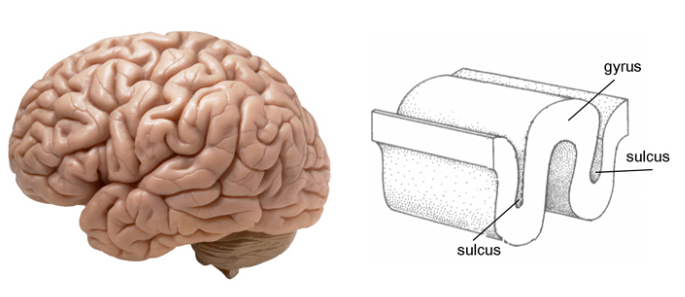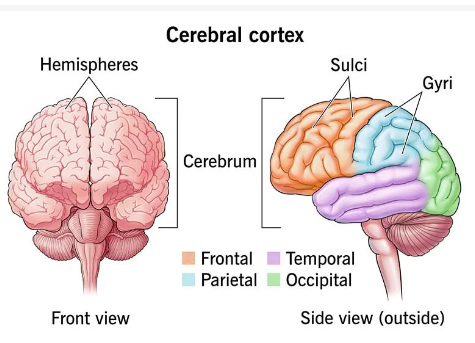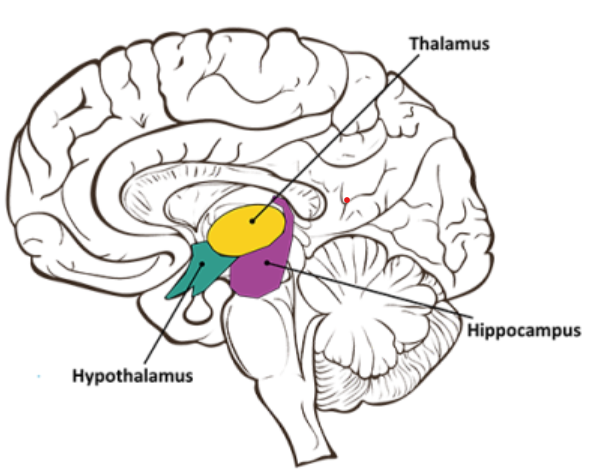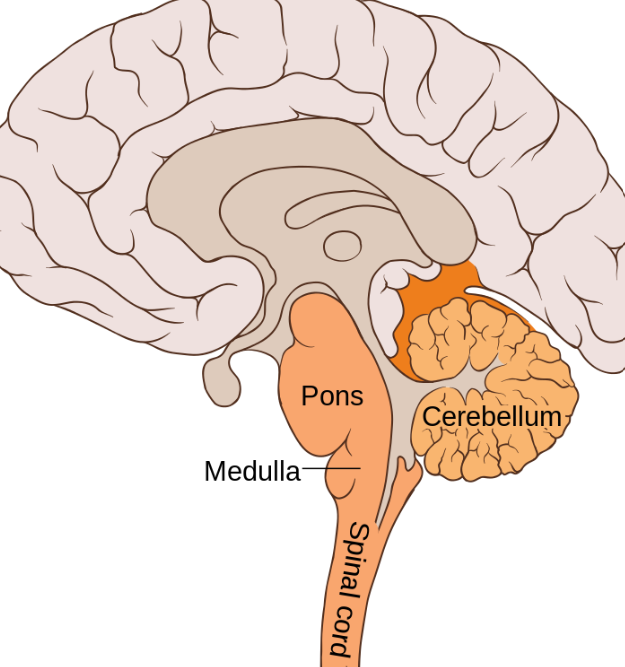The purpose of this post is to quickly introduce some brain anatomy basics before proceeding to understand functional Magnetic Resonance Imaging, or fMRI for short. My main reference to understanding these basics is the first chapter of The Statistical Analysis of Functional MRI Data by Nicole A. Lazar. Two introductory Neuroscience resources, which can be used for reference are:
- Brain Anatomy, Queensland Brain Institute.
- Foundations of Neuroscience, Casey Henley.
- Brain basics
Brain anatomy is mostly summarized pictorially for better understanding. Please note that most pictures used in this post are from either of the two resources.
Firstly, the brain has a left and a right hemisphere separated by the corpus callosum which can be thought of as the midline of the brain. The brain is made of three main parts: forebrain, midbrain, and hindbrain. [1]

Forebrain
Forebrain is made up of cerebrum or cortex, thalamus, and hypothalamus.
First, we look at the cortex. The cortex is the largest part of the brain with several folds (sulci) and bulges (gyrus) on its surface as shown in the picture below. These folds and bulges ensure a larger surface area of the brain. In fact, when we see the brain, most of is visible is the cerebrum. It is the cerebrum that divides the brain into two hemispheres. [2]

Cerebrum is important for thinking, planning, reasoning, language processing, and interpreting and processing inputs from our senses, such as vision, touch, hearing, taste, and smell.
The outer layer of the cerebrum is called the cerebral cortex, and in each hemisphere, it is traditionally divided into four lobes - frontal, parietal, occipital, and temporal. [2][3] The communication between the two spheres is due to the corpus callosum.


Thalamus is important for sensory and motor function. It also controls our sleep. On the other hand, the hypothalamus is involved in regulating homeostasis in our body.[1]

Hindbrain
The Hindbrain is made up of cerebellum, pons, and medulla as shown below. [2]
- Cerebellum is important for posture, balance, and movement.
- Pons connect the brainstem to cerebral cortex.
- Medulla oblongata contains control centers for functions like heart rate, blood pressure, breathing, etc.

Some other terms to know: Limbic system constitutes thalamus, hypothalamus, amygdala, and hippocampus. It plays an important role in emotional behavior. Additionally, the midbrain together with the pons and medulla makes up the brain stem
Directional Terms and Anatomical Planes
It is useful to know some direction terms along with the planes or axes along which we can observe the brain before proceeding any further. I found chapter 16 of [4] extremely useful in getting a good understanding of different terms.
Directional terms are used to locate one structure, usually in relation to another structure.

Three anatomical planes are used to divide the nervous system to be able to view internal regions and structures.

References
- Brain basics page by NIH.
- Brain Anatomy, Queensland Brain Institute.
- Cerebral Cortex, Cleveland Clinic.
- Foundations of Neuroscience, Casey Henley.